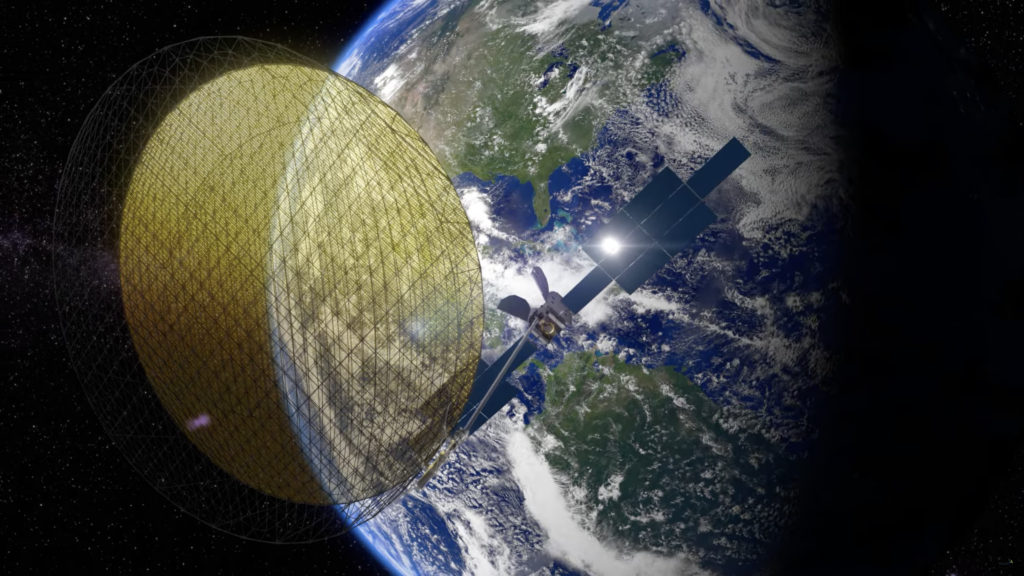Viasat is faced with the problem of deploying the main antenna on its new satellite ViaSat-3. If it cannot be solved, it may lead to the payment of insurance in the amount of 420 million dollars, which will be the largest case in the history of astronautics.
One of the largest satellites in history
Viasat-3 is a geostationary communications satellite. The 6.7-ton vehicle was built by Boeing. It is part of a constellation of three satellites capable of providing a bandwidth of 3 terabits per second. This is 500% more than the capabilities of the current Viasat satellite fleet.

Such a high bandwidth is provided by a huge antenna, which is one of the largest ever launched into space. It is located on a boom arm. To provide it with energy, engineers equipped the satellite with a block of eight solar panels with a total length of 44 meters, which is comparable to the length of a Boeing 767 aircraft.
Problems with antenna
Viasat-3 was launched on May 1, 2023, using a Falcon Heavy rocket. The spacecraft successfully entered the geostationary position at 88.9° west longitude. However, the good news for the device ended there. Judging by a message recently published on Viasat’s website, a malfunction occurred during the deployment of the antenna and it failed to open.
So far, Viasat has not reported the exact circumstances of the incident. But it is obvious that we are talking about a very serious problem. Now the company is consulting with the antenna manufacturer to find ways to deploy it. Viasat is also developing an action plan to minimize economic damage. It includes the relocation of the company’s other satellites and the redistribution of the following ViaSat-3 class vehicles to provide additional bandwidth in North and South America.
In the event that the problem with Viasat-3 cannot be solved, this may lead to a claim for payment of insurance compensation in the amount of 420 million dollars. According to experts, this will be the largest case in the history of cosmonautics.
According to https://spacenews.com
Follow us on Twitter to get the most interesting space news in time
https://twitter.com/ust_magazine
